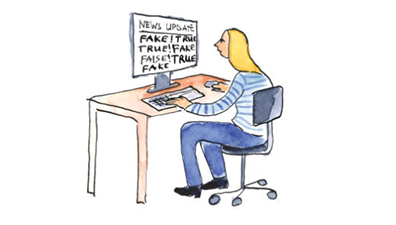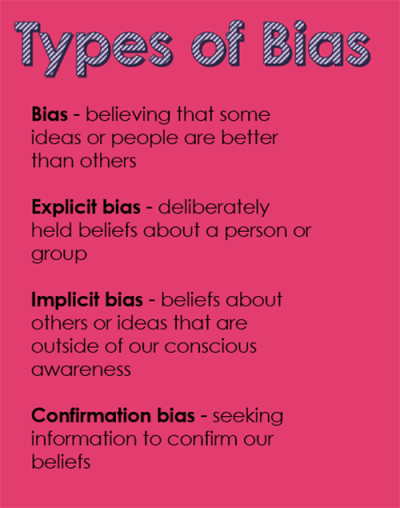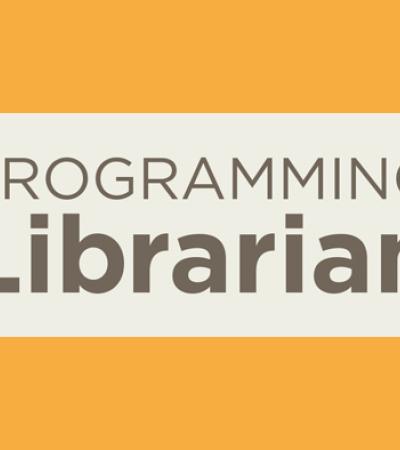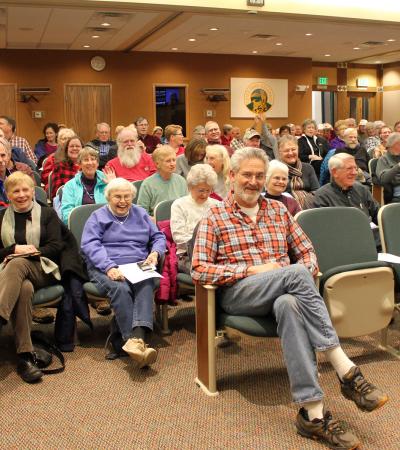Confirmation bias is defined by Dictionary.com as "the tendency to process and analyze information in such a way that it supports one's preexisting ideas and convictions."
As human beings, we all have confirmation bias when it comes to our belief system; it’s programmed into our brains whether we know it or not. When we digest new information, a biased approach to decision making is often unintentional. We often ignore information that is inconsistent with our beliefs. When an issue is important to us, we have a tendency to find information that supports our own beliefs and ideas, and we limit ideas that do not match our own viewpoint.

As we were researching confirmation bias and how it is assisting in the spread of fake news, we found ourselves thinking a lot about how social media allows our confirmation bias to be more acceptable. We are insulated in our social media bubbles as the algorithms that make up our social feeds allow us to see and hear news that allows us to confirm our biases.
“We can live in the biggest city in the country, and as long as we keep our faces buried in our smartphones, we will feel connected to the group we belong to and read the information we want to believe," stated an article we read in Psychology Today. "And we will be sitting ducks for anyone who wants to feed us fake news.”
Resources to teach confirmation bias
No librarian wants to feel like their students or patrons are a “sitting duck” for misinformation. We want our programming to engage people in checking for bias, finding the facts, and understanding how our social media insulates and creates an information bubble.
How do we teach information literacy to students while taking into account that our students are also affected by confirmation bias? What programming do we put in place to assiststudents in understanding that confirmation bias does exist and how to counteract it?

First, help your students understand the different types of bias.
- Bias: believing that some ideas or people are better than others
- Explicit bias: deliberately held beliefs about a person or group
- Implicit bias: beliefs about others or ideas that are outside of our conscious awareness
- Confirmation bias: seeking information to confirm our beliefs
Next, utilize some of the amazing programming resources and lessons that the World Wide Web has to offer on the topic of confirmation bias.
We’ve curated the following list of our favorites for you to add to your library programming. We are including an annotation and the grade levels where we think these lessons would work best, but as always, you are the expert in knowing your students and these lessons and resources can be utilized in your school community.
Facing History
Facing History is a nonprofit international educational and professional organization with the mission of “engaging students of diverse backgrounds in an examination of racism, prejudice, and antisemitism in order to promote the development of a more humane and informed citizenry.
The lesson, "Confirmation and Other Biases," is part of a larger unit on News Literacy. It focuses on these two essential questions:
- How can people have vastly different understandings of the basics facts of a situation?
- What is confirmation bias and how does it relate to our implicit biases?
This lesson is one that would work well in high school as the definitions are pretty weighty and the materials and videos appeal to that age group. We also like this lesson because everything you need is available for you, free of charge, online.
KQED
KQED, a public radio station in San Francisco, has created several lessons on confirmation bias that are great for both middle and high school students. The PBS series "Above the Noise" is featured and introduces the idea of confirmation bias is a early teen friendly way with the video "Why Do Our Brains Love Fake News?". Myles Bess breaks down why our brains are wired to make us easily believe fake news through confirmation bias.
The lesson plan "How to Recognize Bias" is included as a PDF on the site. We think students and teachers alike will really enjoy this high-energy video and accompanying lesson plan.
Newseum Education
Newseum Education offers up a lesson plan that works in both middle school and high school. The lesson plan, "Confronting Confirmation Bias," has students consider how confirmation bias shapes the way humans respond to evidence that they are presented. Using several articles, students read and discuss how to become conscious of their own thinking process when coming to conclusions. It also assists students in understanding confirmation bias by introducing the topic using an idea near and dear to many a teenage heart: starting school later!
Common Sense Media
As always, sharing what you are doing in the library is a great idea. The article "How do I teach my kids about bias in the news?" from Common Sense Media gives parents helpful tips on talking about bias at home with their children. Helpful tips for parents include: being aware of our own biases, reinforcing school learning, talking about different perspectives and exposure.
We know there are many more lessons and ideas that you are already working on in your school libraries. Share them in the comments below. Because, as we all know, the more you learn, the more you grow!



